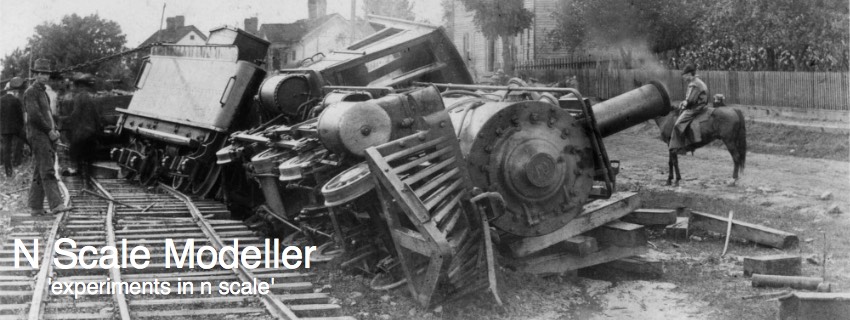Post 9 from my old blog (from ~2011)
This now happened quite a while ago now but as luck would have it, barely a week after I made my last post on using muscle wire for turnout actuators my last bit of wire broke :-( It was a bit of a shame really, as the test rig had operated for months without any problems.
What happened was that I built an actuator based on the crank system as described in a previous post on servos and at Tamalpais Valley Railroad, but instead of using a servo to move the crank I reused my last bit of muscle wire to pull on one side of the crank and a spring on the other side to pull the crank back. I used a small piece of styrene with 3 holes in it to connect the muscle wire, the crank and the spring:
This setup worked well for about 6 weeks. As with the initial test, I actuated the wire by flipping the load switch on my power supply half a dozen times each morning and then left the switch on for the rest of the day, so that the muscle wire was under load most of the time. The turnout worked flawlessly until one morning I noticed there was no current flowing through the wire (my power supply has a current meter). Turning over my test rig I saw that the muscle wire was broken.
After my huge initial disappointment I noticed something a bit strange about the location of the styrene connector. This connector is made of thin styrene and in the diagram you can see that I have turned the last 5 mm or so of the crank downwards and fitted the connector over this. However, the connector was now on the crank arm part, i.e. it had slipped past the bend. Maybe it is just my wishful thinking, but it looked very much like the connector had slipped past the bend and gradually worked its way up the crank arm. As it got closer to the bearing part of the crank - where it goes up through the baseboard to the turnout - the force on the wire would have increased enormously. Hence the broken wire. Anyway that is my story and I’m sticking to it:-)
Only problem is, I am now definitely out of wire.
